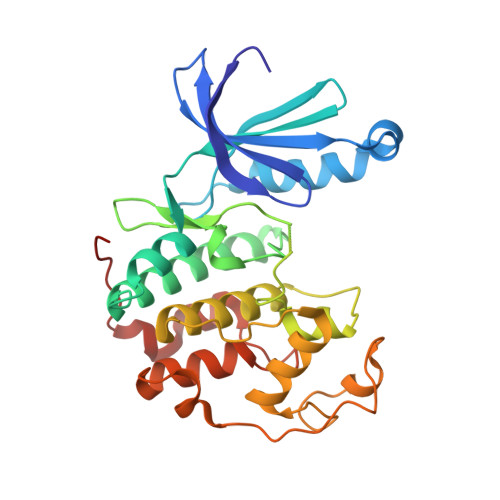Detection of Secondary Binding Sites in Proteins Using Fragment Screening.
Ludlow, R.F., Verdonk, M.L., Saini, H.K., Tickle, I.J., Jhoti, H.(2015) Proc Natl Acad Sci U S A 112: 15910
- PubMed: 26655740
- DOI: https://doi.org/10.1073/pnas.1518946112
- Primary Citation of Related Structures:
5FP5, 5FP6, 5FPD, 5FPE, 5FPM, 5FPN, 5FPO, 5FPR, 5FPS, 5FPT, 5FPY - PubMed Abstract:
Proteins need to be tightly regulated as they control biological processes in most normal cellular functions. The precise mechanisms of regulation are rarely completely understood but can involve binding of endogenous ligands and/or partner proteins at specific locations on a protein that can modulate function. Often, these additional secondary binding sites appear separate to the primary binding site, which, for example for an enzyme, may bind a substrate. In previous work, we have uncovered several examples in which secondary binding sites were discovered on proteins using fragment screening approaches. In each case, we were able to establish that the newly identified secondary binding site was biologically relevant as it was able to modulate function by the binding of a small molecule. In this study, we investigate how often secondary binding sites are located on proteins by analyzing 24 protein targets for which we have performed a fragment screen using X-ray crystallography. Our analysis shows that, surprisingly, the majority of proteins contain secondary binding sites based on their ability to bind fragments. Furthermore, sequence analysis of these previously unknown sites indicate high conservation, which suggests that they may have a biological function, perhaps via an allosteric mechanism. Comparing the physicochemical properties of the secondary sites with known primary ligand binding sites also shows broad similarities indicating that many of the secondary sites may be druggable in nature with small molecules that could provide new opportunities to modulate potential therapeutic targets.
- Astex Pharmaceuticals, Cambridge CB4 0QA, United Kingdom.
Organizational Affiliation:

















